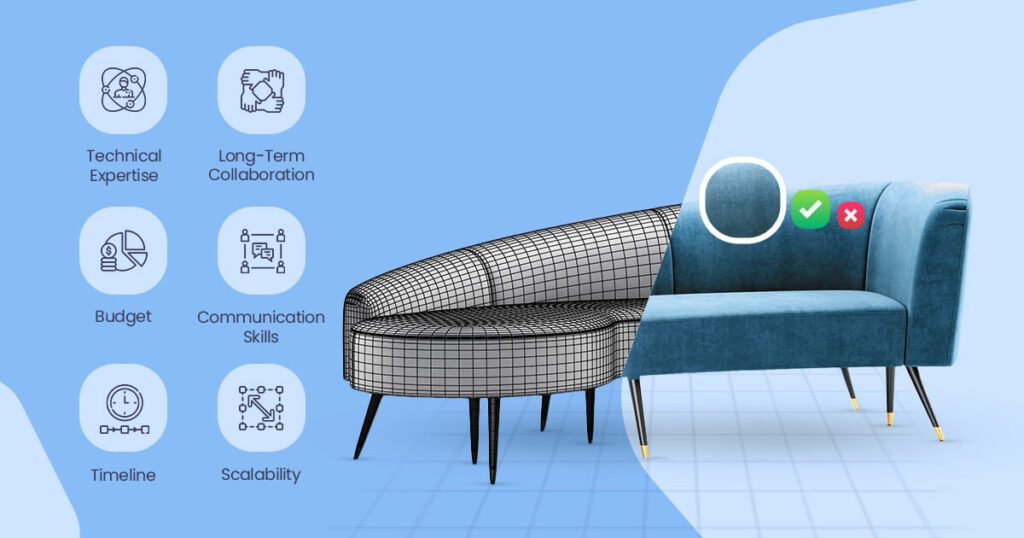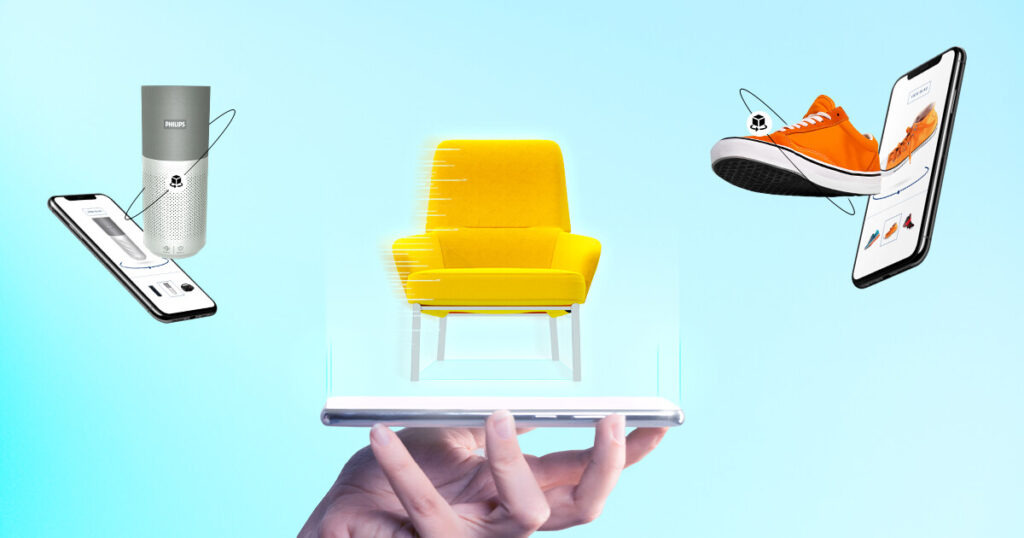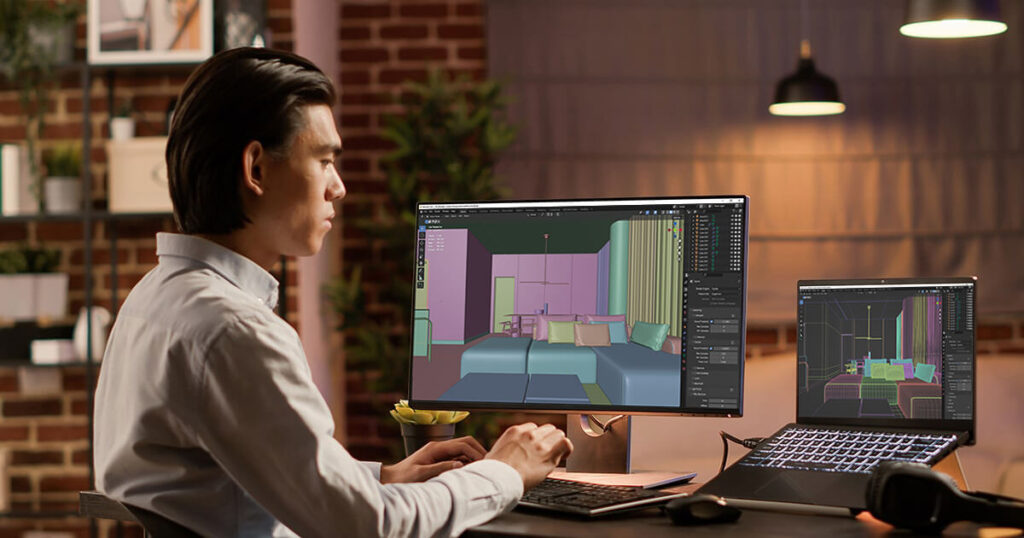Make use of specialized software, 3D visualizing is the action of creating lifelike, three-dimensional delineations of articles or positions. Spectators can pursue and interchange with the virtual area using 3D imagination, which provides a more elaborate and immersive view than typical 2D pictures or shoots.
In today’s competitive market, optical appeal is most important. For marketers as well as designers, 3D visualizing has become a vital tool. For designers, it provides a platform to test various ideas, implements, and layouts before bodily producing, saving time and money. Besides, 3D models provide a clear and extensive understanding of the effect, facilitate efficient communication, and help between team members.
The use of 3D visualizing in marketing is innovative. 3D visualizations aid buyers in finding how the effect fits into their own existence and permit companies to showcase products in a realistic position. As a consequence, this promotes belief, enhances brand understanding, and improves sales.
We will go deeper into the kingdom of 3D visualization and experiment with its benefits for the furniture section, specifically in this blog post. We’ll talk about how upper 3D renderings may raise the effect list, produce charming online shopping experiences, and increase sales. We will also divide our knowledge on the recent developments in 3D visualization, including trends and technology, and how to best utilize them for impact.
The Role of 3D Visualizing in Design
Improve Creativity and Innovation
In design, 3D visualizing is a potent stimulant that fosters creativity and innovation. Giving designers a concrete and engaging way to portray concepts, it enables them to:
- Investigate countless options: Amusement around with diverse materials, shapes, and configurations without any corporal restriction.
- Make difficult ideas visual: Successfully carry compounded design ideas to partners and clients.
- Spot possible problems early on: Recognize the design defect and make the necessary corrections prior to the physical prototype.
- Set limits: Investigate novel sketch approaches and query accepted wisdom.
Streamlining the Design Process
The procedure of scheming is greatly optimized by 3D visualization:
- Making decisions more quickly: 3D visualizing plan facilitates fast, more informed decision-making by stakeholders.
- Lowering mistakes and rework: Time and money are deposited by spotting design defects quickly in action.
- Increasing dialogue: Clear communication between designers and buyers is made simple with the use of visual representations.
- Facilitating collaboration: A diversity of stakeholders can take part and immediately offer feedback on the design.
Tools and software commonly used in 3D design
Specialized software is used in 3D design to convert concepts into digital models. Important categories consist of:
- 3D Modeling: 3D things are made from scratch using programs like Blender, SolidWorks, and Autodesk Maya. These are too many necessary tools for animation, architecture, and product design.
- Rendering: V-Ray, Octane Render, and other programs are used to make realist visuals from 3D models. They emulate touch, equipment, and lighting.
- CAD: Computer-aided design programs like AutoCAD and Revit are used to create precise, useful images and technical drawings.
- Specialized Tools: Specialized design demands are met by additional tools such as Adobe Photoshop for texturing, Unity or Unreal Engine for game production, and Brush for sculpting.
The choice of software is influenced by the project’s complexity, the desired outcome, and the user experience.
Impact of 3D Visualizing on Marketing Strategies
Creating Engaging and Immersive Experiences
Through the creation of captivating and immersive experiences that appeal to customers, 3D visualization is revolutionizing marketing. By using virtual worlds, marketers are able to:
- Arouse feelings: Make strong emotional connections by using your senses.
- Improve narrative: Make stories and things come to life with vibrant graphics.
- Boost involvement: Draw interest and promote conversation.
- Foster a brand’s loyalty: Encourage a closer bond with the intended audience.
Improving Product Presentations and Demonstrations
The use of 3D visualization in product presentations is revolutionary providing:
- Detailed product exploration: Permit customers to inspect products from all sides.
- Interactive demonstrations: Display the advantages and characteristics of the product in action.
- Customization: Allow users to make digital changes to products.
- Reduced returns: Reduce misinterpretations and refunds by giving truthful descriptions.
Case Studies of Successful Marketing Campaigns Utilizing 3D Visualizing
A lot of companies have used 3D visualization to propel their business. As examples, consider:
- Nike: made product configurators that are interactive and let users create personalized trainers.
- IKEA: provided clients with virtual home planning tools to help them picture furniture in their rooms.
- Automobiles: showcased vehicles with comprehensive product details in engrossing virtual showrooms.
- Real estate: made virtual tours of properties so that prospective purchasers could view them from a distance.
These firms have improved their marketing efforts, raised client engagement levels, and boosted revenue by utilizing 3D visualization.
Future Trends in 3D Visualizing
Advancements in Technology and Software
Rapid technical advancement is expected to form the future of 3D visualization. Significant improvements consist of real-time rendering. This technique produces keen images quickly, allowing for interactive experiences. Artificial intelligence (AI): workflow optimization, innovative design generation, and task automation. Cloud computing Increasing scalability, accessibility, and collaboration. Hardware acceleration utilize specialized CPUs and powerful GPUs to render images more quickly. Extension of Open-Source More people are eligible for access to technology and are encouraged to be creative through open-source development.
The Rise of Virtual and Augmented Reality
3D visualizations are changing the way we engage with them, thanks to VR and AR. These technological advancements provide. Immersive experiences to create a realistic engagement, users are placed in virtual settings. Interactive exploration enables real-time manipulation and exploration of 3D models by users. New applications bringing 3D visualization into other domains, such as education, entertainment, and training.
Predictions for the Future of 3D Visualizing in Design and Marketing
3D visualization has huge probability for design and marketing in the future. Hyper-realistic images gain a photorealistic look while obfuscating the difference between virtual and real worlds. Personalized experiences with 3D content that is modify to each user’s flavor and habits. Interactive product design utilizing online channels to let users co-create things. Virtual try-ons and showrooms offer charming shopping encounters. In augmented reality marketing for captivating campaigns, digital content is superimposed on the real world. The future of design, marketing, and other fields will be greatly influenced by 3D visualization as technology develops.
Conclusion
A main factor in changing industries and redefining our understanding of and interactions with the outside world is 3D visualization. Its capacity to change impalpable plans into actual, interactive experiences has absolutely changed how companies’ task and interact with their clientele. 3D visualization gives businesses a competitive edge in a variety of industries, including marketing, amusement, architecture, and product design. It does this by fostering innovation, optimizing workflows, and creating immersive knowledge.
As technology continues to progress, so too do the possibilities of 3D visualization. Effective and augmented in the real world, artificial intelligence, and cloud computing are concentric to making even more powerful and immersive appeals. By grasping these tendencies and investing in the right instrument and genius, businesses can unlock new opportunities, optimize operations, and foster newness.
In the digital age, designers must now have 3D visualization—it is no longer a luxury. Its capability to be near the opening between imagination and reality makes it a vital tool for expanding the business, enhancing customer experiences, and influencing industry trends.





